BoardTalk
President’s Report
Recently I had the honour of joining the academic procession at the University of Sydney veterinary graduation ceremony and leading the graduating DVM students in taking the Veterinary Oath. The Oath talks to the responsibilities we have as veterinarians to animal welfare, the community, and our patients. It also speaks to the need to improve skills and knowledge to maintain current standards. I urge all veterinarians to review the Oath and be guided by these principles.
At the graduation, the Dean, Professor Norris eloquently gave the occasional address discussing what makes an outstanding clinician.
An outstanding clinician has confidence tempered with humility, empathy, compassion, and integrity. These characteristics inspire trust.
Communication and other soft skills like teamwork and collaboration should be an integral component of your professional development plan.
The Board has recently finalised its Strategic Plan 2023-2026. Our purpose is to optimise animal welfare across NSW through the regulation of a sustainable and trusted veterinary profession. This document will help guide the Board and office in working towards meeting this purpose.
The strategic plan has four goals.
Continued p. 20
Registration and licence renewals are due
Please ensure you renew your veterinary registration and hospital licence by 30 June.

Registration renewal requires both payment of the registration renewal fee of $320 (unless honorary) and submission of the Annual Return.
Both can be completed using your Vet Login and if you experience any difficulties please call or email the office
A late fee of $55 applies to registrations renewed after 30 June and if you have not renewed by 31 July your name will be removed from the Register.

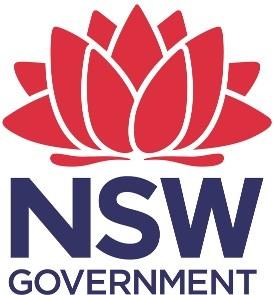
Restoration to the Register in these circumstances will incur an additional fee equal to the registration fee.
Don’t be late!
Registration renewals
Registration renewals must be completed by 30 June 2023 for the registration period 1 July 2023 to 30 June 2024.
The registration fee is $320.
If you have not yet received your registration renewal notice by email please contact the Board
The easiest way to renew your registration is to use the Vet Login
If you do not yet have a Vet Login click on the Forgotten your password link from the Vet Login page and details will be sent to your registered email address.
If you no longer have access to your registered email address please contact the Board.
Problem submitting?
Please enter zero ‘0’ if you have not completed structured or unstructured CPD.
Ensure your work address includes ‘state’ details.
Additions and removals for 2022
As detailed in the Annual Report, as at 30 June 2022 there were 4396 registered veterinarians in NSW. Each year, the Board processes additions and removals from the register so the number of veterinarians registered varies throughout the year.
Additions to the register represent new registrations and veterinarians who are returning to the register after a period of absence. There were 371 additions to the register during the financial year ending 30 June 2022. The majority of these veterinarians (312) were less than 40 years and were granted full registration (Figure 1).
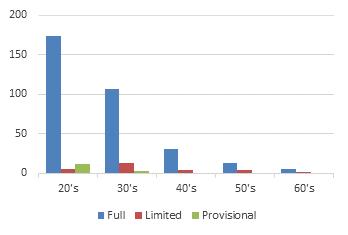
Graduands from Australia and New Zealand, veterinarians who have completed their qualification but have not yet graduated, are granted provisional registration and their registration division is changed to full once a copy of their testamur is provided to the Board.
The majority of veterinarians added to the register graduated from Australian universities (266) with most from The University of Sydney (129) and Charles Sturt University (52).

There were 105 veterinarians added to the register with qualifications obtained from 24 countries outside Australia. The majority of these were graduates from the United Kingdom (28) and South Africa (15).
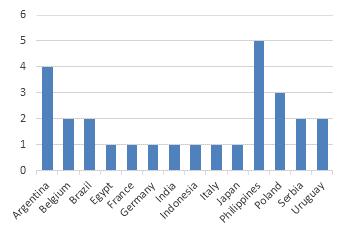
There were 27 veterinarians granted limited registration (Figure 2) as they did not have a primary qualification approved by the Australasian Veterinary Boards Council (AVBC). The majority of these will be enrolled in the Australasian Veterinary Exam and will be working under supervision until they successfully complete the final clinical examination component of this exam. Once this qualification is attained they will be eligible for full registration.
Figure 3 shows that the majority of additions to the register reported their work remoteness location as a major city area (63%) followed by inner regional areas (28%). In 2022, 58% of all veterinarians reportedly worked in major city areas and 30% worked in inner regional areas. More detail on remoteness location is available from the Annual Report
Figure 1 Additions to the register in 2022 by age group and registration type Figure 2 Additions to the register in 2022 with limited registration by country of qualificationThere were 97 veterinarians who voluntarily removed themselves from the register in 2022 or 2.2% of all registered veterinarians (Figure 4). The majority of these indicated they were moving interstate. Four veterinarians indicated they were leaving the profession; two in their thirties, one in their forties and one in their fifties.
Annual returns
Registration renewals require the completion of both an annual return and payment of the prescribed registration renewal fee.
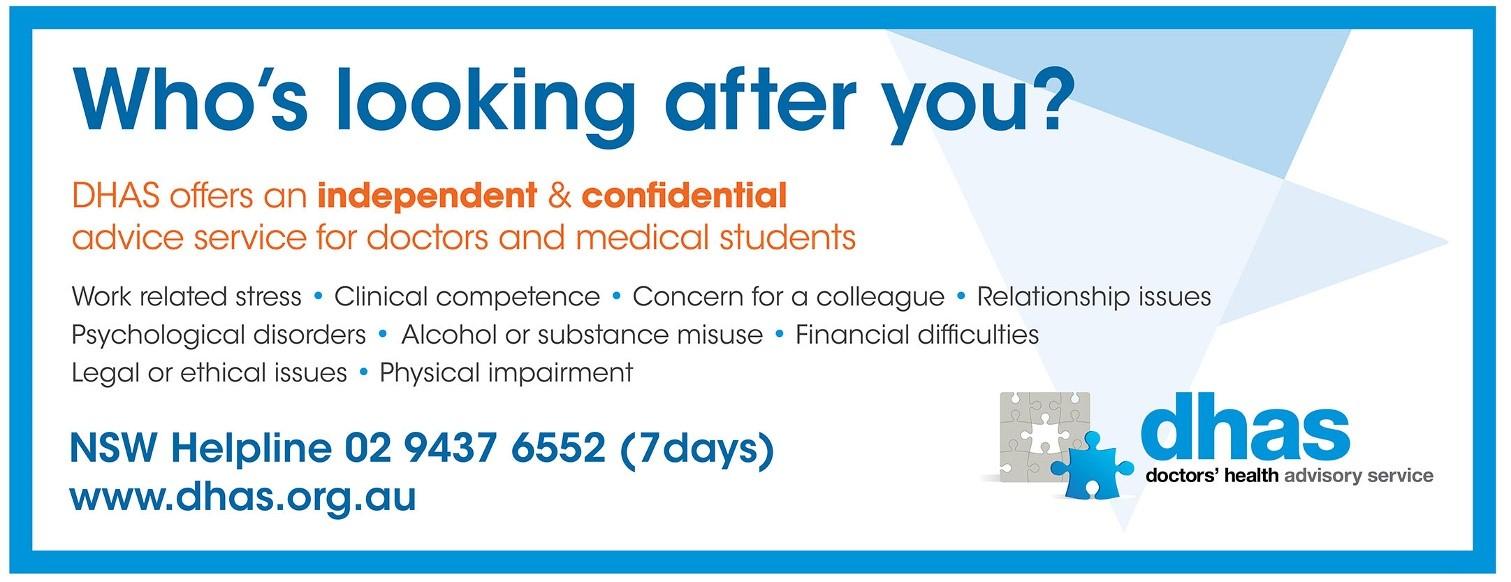
Data collected from veterinarian annual returns is summarised in the Annual Report, on the Board’s website and in issues of BoardTalk
These data provide information for the profession and the public. This data may be used to support decision making in areas such as workforce capacity.
Veterinary demographic data presented include veterinarians by registration type, gender, age group, employment type, and work area remoteness.
Veterinarians wishing to register outside NSW require the Board to provide a Letter of Professional Standing to the new registration or licensing authority. In 2022, the Board provided 174 Letters of Professional Standing. The majority of these letters were to other Australian jurisdictions (99) with New Zealand (27) and the United Kingdom (21) being the main overseas destinations. Letters of Professional Standing were sent to 9 countries other than Australia.
Some veterinarians moving interstate and overseas will choose to remain on the register in NSW. In 2022, 126 registered veterinarians in NSW (3%) reported that they were working overseas and 95% reported they were working in NSW.
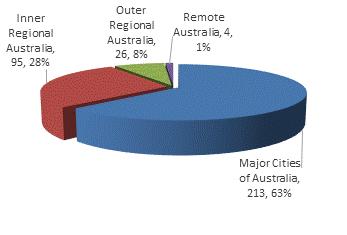
Hospital licence data are also available and include statistics on hospital numbers, licence types and location.
The Board also provides complaints data to the profession and the public through these same sources.
If you do not see something you are interested in from data collected by annual returns please contact our office and we will look to add these data to our reports.
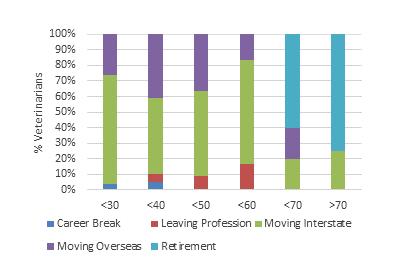
 Figure 3 Additions to the register in 2022 by work remoteness location
Figure 4 Voluntary removals from the register in 2022 by reason
Figure 3 Additions to the register in 2022 by work remoteness location
Figure 4 Voluntary removals from the register in 2022 by reason
Complaints Committee Report
The Board reviewed and determined 25 complaints made against 30 veterinarians between November 2022 and April 2023. Four complaints involved more than one veterinarian at a veterinary hospital.
Complaints against 22 of the 30 veterinarians named in the complaints were dismissed.
Unsatisfactory professional conduct
Findings of unsatisfactory professional conduct (UPC) were made against 8 veterinarians, all of whom were issued with cautions. The main legislative themes for this recent period were current standards of veterinary practice (Code (cl 4), informed consent (Code (cl 7), and knowledge, skill, care and judgment (Act (s 35(k))).

Current standards
A finding of unsatisfactory professional conduct was made against a veterinarian in relation to treatment of a bird that was initially presented for investigation of potential renal disease.
During the diagnostic investigation, it is likely that the aged bird suffered a fracture to its wing, which is a known complication. The veterinarian recommended the wing be amputated at the practice and the wing was amputated that same day. The bird self-traumatized the wound overnight and returned to the practice the following day.
The Board was concerned that the veterinarian did not assess the haemodynamic status of the bird, or offer, or attempt, to appropriately stabilize the bird before performing revision surgery, nor did the veterinarian offer the client referral for specialist treatment and 24 hour care.
The main legislative themes for this recent period were current standards of veterinary practice (Code (cl 4)), informed consent (Code (cl 7)), and knowledge, skill, care and judgment (Act (s 35(k))).
The Board made findings against this veterinarian in relation to both clauses 4 and 5 (utilisation of skills of colleagues) of the Code and a fine was imposed.
Performance, conduct or health
Adopting the model from medical regulators, the Board looks to categorise complaints into the areas of performance, conduct or health.
Performance issues may require education through additional continuing professional development requirements.
Research from the medical regulator has shown that disciplinary action such as a caution or reprimand can decrease the likelihood of repeat offences.
Health issues require support and complaints linking to this area may be referred to our Health Program
A second finding of unsatisfactory professional conduct was made against a veterinarian regarding the management of a rectal tear in a mare.
Again, in this case, the Board was concerned with how this complication was managed rather than the complication itself which is a known risk. After detecting the tear, the veterinarian did not perform appropriate diagnostic tests and monitoring, and the records were not in sufficient detail to allow another veterinarian to take over care of the animal.
The Board made findings against this veterinarian in relation to both clauses 4 and 15 (records) of the Code and the veterinarian was required to submit further clinical records for review.
A third finding of unsatisfactory professional conduct based on current standings was made in relation to the handling of a fearful dog.
The veterinarian attempted to sedate the dog (acepromazine and methadone) outside the hospital before examining him. Unfortunately, this choice of sedation did not provide adequate sedation to allow him to be moved into the clinic on a stretcher as planned. The Board noted that these sedative agents are typically used as premedication for anaesthesia and that more suitable agents are available for the management of fearful and anxious patients.
The veterinarian was concerned about administering further sedation to the patient and elected instead to use a combination of pushing (towel under the abdomen) and pulling (slip lead) the dog into the hospital with assistance from a colleague. The dog became cyanotic and subsequently went into respiratory and cardiac arrest. Appropriate CPR was provided but the patient died.
The Board determined that the veterinarian’s handling of a fearful patient was not in accordance with current standards of the practice of veterinary science. The practitioner was issued with a caution and required to undertake CPD on the handling of and chemical restraint for fearful and anxious animals.
A fourth finding of unsatisfactory professional conduct was made against a veterinarian in relation to current standards regarding a representation they had made during the sale of a dog.
Unsatisfactory professional conduct (cont’d)
When the purchaser enquired about the dog’s dentition, the breeder, who had identified themselves as a veterinarian, replied that the dog’s teeth were “perfectly aligned.” After purchase, the dog was diagnosed with dental abnormalities including missing incisors, gum recession and a malpositioned incisor.
The Board determined that the veterinarian’s examination of the dog’s oral cavity was not in accordance with current standards of veterinary practice.
The Board issued the veterinarian with a caution and required the veterinarian to undertake CPD in paediatric dental conditions.
Informed consent
Under the Code, where it is practicable to do so, a veterinary practitioner must obtain the informed consent of the person responsible for the care of an animal before providing veterinary services to the animal.
A finding of unsatisfactory professional conduct was made against a veterinarian who failed to ensure that a client was aware that their cat would not be continuously monitored overnight.
It cannot be assumed that a long-standing client is aware of whether a veterinary hospital provides continuous overnight monitoring. When admitting an animal for treatment, it is the veterinarian’s responsibility to ensure they gain informed consent. Discussion on the extent of veterinary services to be provided includes the level of monitoring overnight.
The veterinarian was issued with a caution and the hospital superintendent was advised to review protocols regarding client communications and informed consent.
Knowledge, skill, care and judgment
Unsatisfactory professional conduct can also include any other conduct of a veterinarian that demonstrates a lack of adequate knowledge, skill, judgment or care in the practice of veterinary science (Act s 35 (k)).
A finding under this section was made against a veterinarian who used electrocautery to resect the gingivae of a dog and the dog suffered severe thermal injury as a result.
The veterinarian was issued with a fine and a condition was imposed that the veterinarian cease performing oral surgery until they provided the Board with validation for the completion of CPD in the field of dentistry.
Unsatisfactory professional conduct includes any other conduct of a veterinarian that demonstrates a lack of adequate knowledge, skill, judgment or care in the practice of veterinary science.
A second finding under this section was made against a veterinarian who used the product Stelfonta inappropriately in a patient that had already undergone incomplete surgical resection of a mast cell tumour.
The veterinarian had taken appropriate action when they discovered their error and had undertaken CPD to educate themselves because of the incident. This veterinarian was issued with a caution.
A third finding under this section was made against a veterinarian who had failed to disclose that a patient may have retained tooth roots after a dental procedure.
The patient had multiple co-morbidities and the procedure had been abandoned before completion as the patient could no longer be managed safely under anaesthetic. The patient later developed periocular swelling.
The client and other clinicians in that practice were unaware that tooth roots had been retained during the dental procedure as this had not been communicated to the client or recorded in the clinical history.
The veterinarian was issued with a caution, required to undertake CPD in relation to performing dental extractions and required to provide the Board with copies of ten clinical records for review.
Health Program
An impairment is defined in the Veterinary Practice Act 2003 (s 4 (3)) as any physical or mental impairment, disability, condition or disorder which detrimentally affects or is likely to detrimentally affect the person’s physical or mental capacity to practise veterinary science.
The Board appreciates the difficulties faced by a veterinarian suffering from an impairment and is committed to assisting these veterinarians through the establishment of its Health Program for Veterinarians
The goal of this program is to enable veterinarians to work their way through their health issues with the support of suitably qualified professionals and the Board.
The Board has adopted the procedures outlined in the Doctors’ Health Program provided by the Medical Council of NSW to achieve this goal.
Importantly, it is the Board’s preference that issues of impairment or possible impairment are addressed outside of the Board’s complaints processes and disciplinary powers where possible. The Board also appreciates that stressors associated with the performance of the professional duties of a veterinarian may also be increased during a complaint investigation process.
Hospital licence renewals
Hospital licence renewals must be completed by 30 June 2023 for the registration period 1 July 2023 to 30 June 2024.
The licence renewal fee is $370. Renewal notices are generally sent to the licence holder(s) or an accounts contact provided to the Board.
If you have not yet received your hospital licence renewal notice by email please contact the Board
You can renew your licence either by using your Vet Login or by going to our payments page and entering your hospital licence number.
If you do not yet have a Vet Login click on the Forgotten your password link from the Vet Login page and details will be sent to your registered email address.
Hospital Inspections Report
Hospital inspections have suffered a number of delays over the last couple of years. The hospital inspection program provides a vital link between the Board and the profession and plays a significant role in ensuring the Board achieves its main functions of promoting animal welfare and protecting the public.
The Board is committed to delivering a constructive, engaging and effective hospital inspection program and is looking to employ a second hospital inspector in recognition of the importance of this role.
Here are some common themes from the most recent round of inspections.
Isolation areas
All hospitals must have patient accommodation compliant with general requirements and available for isolating animals that are suffering from suspected infectious diseases. This area must provide a physical and air space difference from all other areas of the hospital so as to prevent the spread of disease to those other areas.
Sometimes the dedicated isolation area is being used as temporary storage. Whilst space is often at a premium, this is a gentle reminder of the necessity of having a dedicated space to be available as an isolation ward. Also highlighting the necessity of having adequate heating, cooling and ventilation to ensure a comfortable environment for patients in this area.
Management of controlled drugs
Many veterinary practices have now moved to using software or electronic drug registers such as Vet S8 to manage their controlled drugs.
Recording and management of S8 medications is an important component of inspections and one relatively common area of difficulty is accounting for the use of infusions with multiple S8 medications.
Information from the Pharmaceutical Regulatory Unit, NSW Ministry of Health on how to record the use of S8s when used in infusions with multiple S8 drugs is provided on page 13.
Embedding of patient and hospital information on radiographs
As noted in the last issue of BoardTalk, the embedding of patient and hospital information on radiographs is another important area of record keeping affected by the use of software.



The Board has noted that data needs to be included before the images are taken to ensure that it is embedded on the actual images. Moreover, it must be possible to trace the image to the client, animal, area, date and any left and right or other appropriate markers.
In some practices this is a software limitation. In others it is simply a matter of saving in the appropriate format.
Please contact your software provider to ensure patient and hospital information is able to be readily traced to the image.
Pain relief for routine animal husbandry procedures
The Veterinary Practitioners Code of Professional Conduct (Code (cl 20)) requires that a veterinarian must only supply a restricted substance (S4 or S8 medication) under the following circumstances:
(a) to a person responsible for the care of an animal that the veterinary practitioner has physically examined or has under his or her direct care, and only in respect of that animal, or
(b) to a person responsible for the care of an animal, with the written authority of another veterinary practitioner who has physically examined the animal concerned or has it under his or her direct care, and only in respect of that animal.
With respect to ‘under his or her direct care’ the Board has previously noted that this inclusion by the legislators enables a veterinarian to physically examine a representative sample of animals on a property, establish a diagnosis and then supply a restricted substance for other animals within that herd or flock (i.e. individual animals the veterinarian has not physically examined).
The Code (cl 4) requires that the establishment of a diagnosis is in accordance with current standards and this aligns with the requirement for a physical examination prior to the supply of a restricted substance.
The Board appreciates that the performance of routine animal husbandry procedures by animal owners and carers does not involve the diagnosis of a physiological or pathological condition and this creates a second option for supply of a restricted substance to an animal under his or her direct care.
Given the importance of pain relief for animals in these circumstances, the Board has revised its Guideline on the supply of pain management medication for animal husbandry procedures in production animals to provide for repeat supply of such medication using a technology based patient consultation.
The Board stresses that this supply of a restricted substance is only for pain relief in production animals undergoing routine animal husbandry procedures and other obligations in accordance with the Code remain as noted in the technology based patient consultation guideline
In summary, in order to supply a restricted substance (S4) for pain relief in animals undergoing routine animal husbandry procedures:
1. The veterinarian must have attended the property prior to any initial supply of pain management medication in order to establish sufficient knowledge in relation to the number, species, and conditions in which the animals are kept.
2. The veterinarian must be aware of the nature of the specific animal husbandry procedure and the number of animals to be treated
3. The medication supplied must be registered for this purpose in the species being treated and the medication and quantity supplied must be in accordance with current standards and specifically not in excess of that required for the number of animals being treated
4. Each individual container must be labelled in accordance with requirements under poisons and therapeutic goods legislation
5. The veterinarian must take reasonable steps to ensure the owner or carer has sufficient knowledge, skills and experience to administer the pain relief appropriately and safely
6. The veterinarian must ensure a record of this supply is maintained for at least 3 years and in sufficient detail to enable another veterinarian to continue the treatment of these animals.
7. Subsequent to the initial property visit, the supply of pain management medication beyond any given 12 month interval must be following either a property visit or suitable technology based consultation in accordance with veterinary practice and poisons and therapeutic goods legislation.
Under poisons and therapeutic goods legislation veterinarians are authorised to possess and supply restricted substances (S4 and S8 medication) for the treatment of animals. Clients and owners of animals may only have access to these medications if lawfully supplied by a veterinarian.
Informed consent
The Veterinary Practitioners Code of Professional Conduct (Code) requires veterinarians, where it is practicable to do so, to gain informed consent from the person responsible for the care of an animal before providing veterinary services to the animal (cl 7).
Notably, the Code does not require consent from the owner of the animal.
The Code (cl 16) requires the veterinarian, where it is practicable to do so, to inform the person responsible for the care of the animal of the likely extent and outcome of the veterinary services and the estimated cost of those services.
The Board considers the above as part of the process of gaining informed consent.
This process applies to all animals, including wildlife, unless, as noted above, it is not practicable, such as in an emergency.
When in the presence of an animal the veterinarian must not refuse to provide relief of pain or suffering through, as appropriate:
1. First aid treatment, or
2. Timely referral to another veterinarian, or
3. Euthanasia
There is no requirement for consent to be in writing.
The Board recommends written consent or a contemporaneous note in the records when verbal consent has been gained.
Pets and vets
Animal Medicines Australia released Pets in Australia, a national survey of pets and people in November 2022.

Analysis of the survey findings concluded that pet ownership had stablised after the pandemic boom with 48% of all households in Australia owning at least one dog (up from 40% in 2019) and 33% of households owning at least one cat (up from 27% in 2019). In total, 69% of the estimated 10.1 million households in Australia owned a pet compared to 61% in 2016 and 2019.
In addition to dogs and cats, 12% of households own fish, 11% own birds, 4% small mammals, 3% reptiles and 1% other pets which includes horses and farm animals. A greater proportion of pet owning households (28%) were also found to have more than one pet compared to 2019 (22%).
With respect to veterinary visits, the report also found that 84% of dog owners and 69% of cat owners had taken their pet to the vet within the last 12 months.
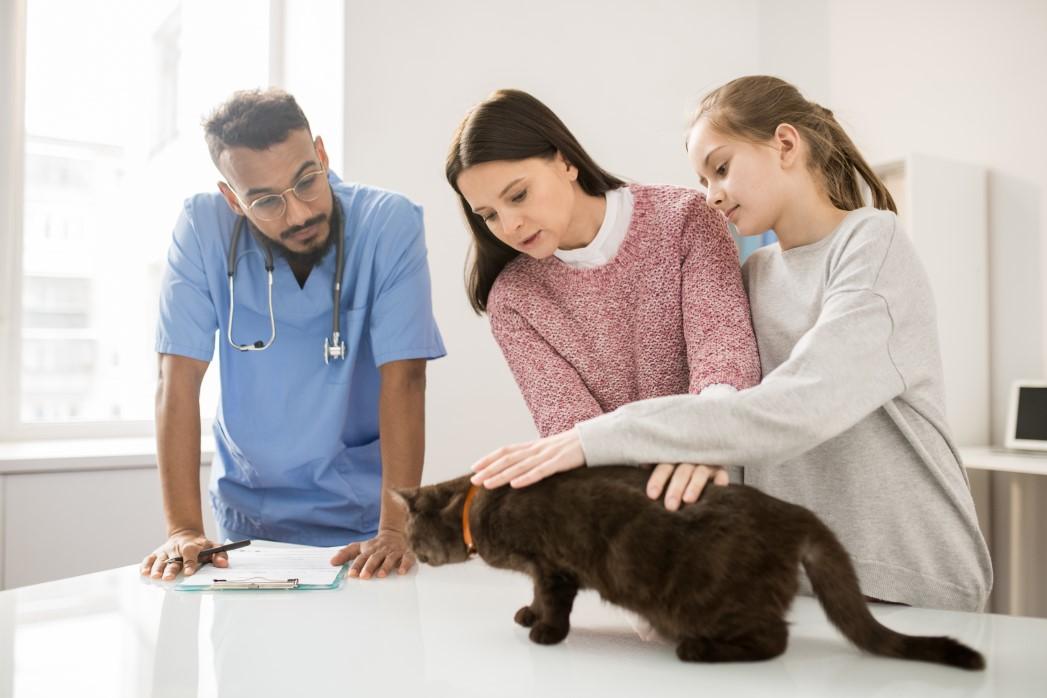
For the period 2019 to 2022, the estimated 1.5% annual average increase in the number of households was accompanied by an annual average increase of 7.9% in dog ownership, 8.6% in cat ownership and 5.8% increase in pet ownership overall.
Part-time work
A trend towards part-time work is likely to have exacerbated the effects of a significant increase in demand for veterinary services.
There has been a general trend to part time employment across all industries since the 1980s.1
Whilst women are generally considered to prefer part time work, the percentage of males working part time has increased from 5.4% in 1980 to 19.1% in 2020.1
Data from the 2018 AVA workforce survey revealed that 27% of veterinarians responding to this survey were working part-time. This was an increase of 4% from the 2016 survey.2
This survey noted that 25% of male and 28% of female veterinarian respondents were working parttime.
1. National Skills Commission n.d., State of Australia’s Skills 2021, The rise in part time employment, Australian Government. Available
2. AVA 2019, Australian Veterinary Workforce Survey 2018, Australian Veterinary Association. Available
Data collected from annual returns in 2022 reveal that 2,303 veterinarians (52% of all veterinarians) were working in either general or specialist small animal practice. Figure 1 provides a summary of the distribution of veterinarians in all types of clinical practice work; approximately 75% of all veterinarians.
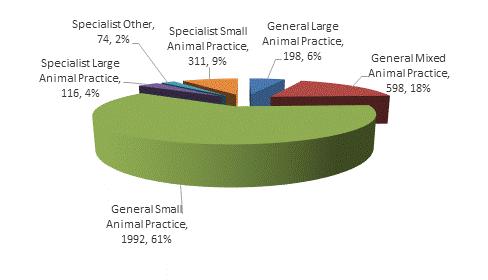
In 2019, 1,945 veterinarians (51% of all veterinarians) were working in either general or specialist small animal practice and approximately 74% of veterinarians were working in clinical practice.
During the period 2019 to 2022, the annual average increase in the number of veterinarians was 5.0%. There was an average annual increase of 5.8% for veterinarians in small animal practice and 5.2% for veterinarians in clinical practice.
Whilst the growth in the total numbers of veterinarians during the period 2019 to 2022 was high, it was not as high as the growth in ownership of dogs and cats, even when accounting for percentages of owners likely to see the veterinarian each year.
As noted by the Pets in Australia report, there was also substantial growth in the percentage of new pet owners which would have likely also affected demand on veterinary time.
The increased demand for veterinary services will also have been exacerbated by the number of veterinarians choosing to work part-time; changes in total numbers described above will not be reflected in the number of full-time equivalent veterinarians.
Now you know why you have been so busy.
Figure 1 Distribution of veterinarians in clinical practice 2022A veterinarian’s responsibilities in relation to veterinary and animal health records are covered in the Veterinary Practitioners Code of Professional Conduct (Code).
Writing and maintaining records
Under the Code (cl 15), a veterinarian must ensure that a detailed record of any consultation, procedure or treatment is made as soon as is practicable. The record:
1. Must be legible and in sufficient detail to enable another veterinary practitioner to continue the treatment of the animal, and
2. Must include the results of any diagnostic tests, analysis and treatments
3. If a record is altered, the alteration must be clearly identified in the record as such
4. A veterinarian must ensure that all records of any consultation, procedure or treatment are retained for at least 3 years after they are made.
Client confidentiality
Under the Code (cl 12) a veterinarian must, except as otherwise required by the Code, maintain the confidentiality of information obtained in the course of his or her professional practice.
Provision of records
Under the Code (cl 10), a veterinarian who has previously treated an animal must, when requested to do so, and with the consent of the person responsible for the care of the animal, provide copies or originals of all relevant case history records directly to another veterinarian who has taken over the treatment of the animal.
In all cases consent should be obtained from the client before releasing records relating to that client. The Board also recommends that permission is sought from the individual veterinarian, superintendent, or owner of the veterinary practice depending on circumstances prior to releasing animal health records.
Ownership of records
The courts have determined that medical records are either owned by the practice or by the individual practitioner.1,2,3
Privacy legislation makes it clear that a person has the right to access all personal information about him or her but animal health information is not covered by privacy legislation.
The cases noted above continue to provide general principles and guidance for questions of ownership of veterinary and animal health records.
Please remember that if another veterinarian has provided records to you in compliance with the Code, these records remain under the ownership of that veterinarian or veterinary practice.
You would need to seek their permission to provide these to the client.
1. Breen v Williams 1996 HCA
2. Health Services for Men v De Sousa & Ors 2000 NSWCA
When a specialist or other veterinarian has visited the practice to treat an animal it is likely, based on the above, that the practice would be the owner of the records however, it would be prudent and ethically appropriate to discuss this matter with the specialist or other veterinarian prior to any release.
Where the veterinarian holds the records of another practitioner provided pursuant to the Code (cl 10) the agreement of that practitioner should be sought prior to releasing the records.

When releasing records, veterinarians must also be mindful of the privacy interests of third parties whose personal information may be included in clinical records. For example, records may be held in one file for an individual animal with multiple clients over time, each client must provide consent for release of information pertaining to when that client was responsible for the care of the animal.
Before releasing records please also consider what other personal information these records hold. A person leaving or who has left a relationship may not wish their contact details to be inadvertently provided to the former partner.

Finally, the Code provides that veterinarians must at all times act with a primary concern for the welfare of animals. Even where there is no obligation to provide a copy of clinical records to a third party, it may be appropriate for the veterinarian to disclose, with consent from the client, information from the records that is necessary to facilitate the treatment and care of the animal.
3. Mid-City Skin Cancer and Laser Centre v Zahedi-Anarak 2006 NSWSC
Tick paralysis of dogs and cats
An updated guide to diagnosis, management, treatment and prevention of Australian tick paralysis developed by the Australian Tick Advisory Panel has been published.
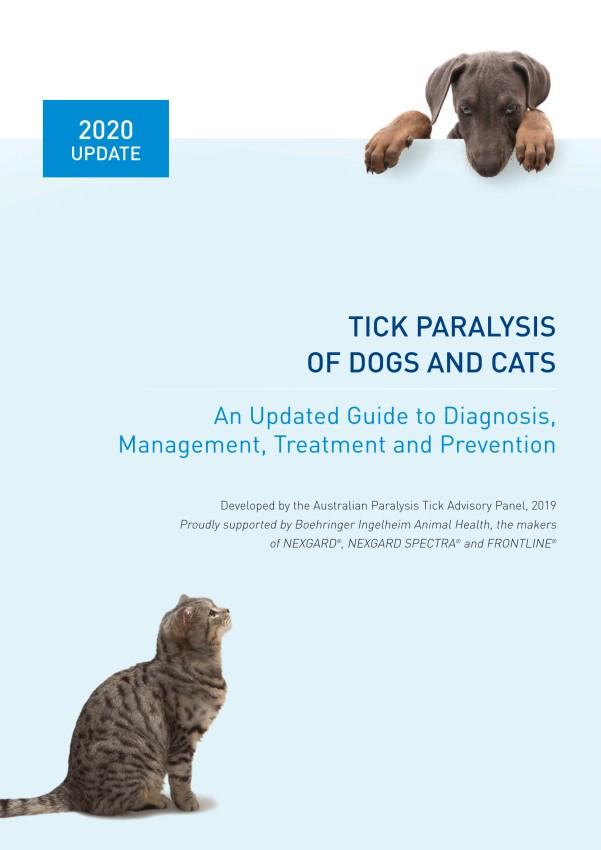
The authors hope these guidelines will:
1. Provide a foundation for consistent management of tick paralysis in dogs and cats
2. Deliver better outcomes for patients and clients
3. Assist veterinarians who are unfamiliar with treating tick paralysis
4. Establish ‘best practice’ when managing tick paralysis
5. Upgrade practice standards where applicable and appropriate.
This very important area of veterinary practice is sometimes poorly understood yet it underpins everything we do as professionals.
Confidentiality provides a significant foundation to the trust the public and our clients have in the veterinary profession.
Breaches of confidentiality may be subject to investigations by the Board and proceedings in the courts.
What does the veterinary practice legislation say about confidentiality?

The Veterinary Practice Act 2003 (Act) (s 55) states that:
(1) A veterinary practitioner must comply with a requirement under this Part to answer a question or to produce information or a document despite any duty of confidentiality in respect of a communication between the veterinary practitioner and a client (but only if the client is the complainant or consents to its disclosure).
(2) A veterinary practitioner may disclose a matter to the Board, a committee of the Board or the Tribunal in breach of any duty of confidentiality if the Board, committee or Tribunal is satisfied that it is necessary for the veterinary practitioner to do so to rebut an allegation in the complaint.
‘A requirement under this Part’ in paragraph (1) above refers to Part 5 of the Act, complaints and disciplinary proceedings.
In relation to a complaint investigation by the Board, if the client is the complainant, you must release records and other information to the Board when requested.
You may release records or disclose matters without client consent if it is necessary to do so to defend yourself against an allegation in a complaint.
The Veterinary Practice Regulation 2013 (Regulation) schedule 2 Veterinary Practitioners Code of Professional Conduct (Code), clause 12 states that:
A veterinary practitioner must maintain the confidentiality of information obtained in the course of professional practice, unless the disclosure of the information is:
(a) authorised or required by this code of conduct or a law of this State or of the Commonwealth, or another State or Territory, or
(b) to an officer under the Prevention of Cruelty to Animals Act 1979 or an approved charitable organisation within the meaning of that Act and relates to an alleged offence under that Act or an alleged offence relating to animal cruelty under the Crimes Act 1900, or
(c) to the Greyhound Welfare and Integrity Commission under the Greyhound Racing Act 2017 and relates to an alleged offence under the Prevention of Cruelty to Animals Act 1979.
Clause 10 of this Code states that:
A veterinary practitioner who has previously treated an animal must, when requested to do so, and with the consent of the person responsible for the care of the animal, provide copies or originals of all relevant case history records directly to another veterinary practitioner who has taken over the treatment of the animal.
If another veterinarian requests the records for a patient that he or she is now caring for and has the consent of the person responsible for the care of that animal then you must release these records to that veterinarian.
The release of client information gained in the course of your professional activities in other circumstances is therefore likely to be viewed as a breach of client confidentiality under clause 12 of the Code. Exceptions however can be found from an examination of other legislation and circumstances below.
What about other legislation?
A subpoena is issued in connection with court proceedings and compels you to provide evidence. It specifies exactly what is required, nominates the court to which this must be delivered, and the date by which this information must be supplied.
If your medical records are included in a subpoena, the client has the right to appeal to the court against the release of these records. If you were to give the records to anyone else (e.g. police), you will deprive your client of that right.
If a court requires you to release specific client information you must do so.
The other area of law that requires veterinarians to release information gained during the course of their professional practice is in relation to notifiable diseases in NSW declared under the Biosecurity Act 2015
There is a legal obligation on veterinarians (and stock owners or managers) who know or suspect that an animal has a notifiable disease to notify the relevant authorities.
Finally, there are a few circumstances where you may but are not required to release client information such as medical records. For example:
• Releasing information to your legal, insurance or other professional advisor who is assisting you to defend an allegation before a court, tribunal or the Board. That advisor has a duty of confidentiality to you.

• Releasing records to your client but remember consent is specific and release records only for the period when your client was the person responsible for the care of the animal concerned.
• Release of records with the consent of the client to a client’s animal insurance provider.
• Release of records to a racing steward upon request and in relation to an investigation where the trainer or person responsible for the care of the horse has provided a signed consent for the release of these records to the racing authorities. It would be prudent before releasing such records to confirm this permission with the client and ensure that you release only the relevant record for that specific horse.
Medical records are the property either of the individual veterinarian or of the veterinary practice. Veterinarians working in a multi-person practice should also seek permission from the practice superintendent before releasing medical records.
It is worthy of noting that veterinary practice legislation refers to ‘client’ and ‘person responsible for the care of the animal’ and not ‘owner’ in these matters.

In summary, there are a few circumstances where you must release information you have obtained in the course of your professional practice and a few circumstances when you may release this information, but otherwise you must maintain the confidentiality of information obtained in the course of your professional practice.
If you are unsure about what to do when confronted with issues of confidentiality it is prudent to seek independent legal advice.
Registration renewals
Registration renewals must be completed by 30 June 2023 for the registration period 1 July 2023 to 30 June 2024.
The registration fee is $320.
If you have not yet received your registration renewal notice by email please contact the Board
The easiest way to renew your registration is to use the Vet Login If you do not yet have a Vet Login click on the Forgotten your password link from the Vet Login page and details will be sent to your registered email address.
If you no longer have access to your registered email address please contact the Board.
Problem submitting?
Please enter zero ‘0’ if you have not completed structured or unstructured CPD.
If using your phone change the orientation to landscape when completing the CPD section or you may miss the field for unstructured points.
Ensure your work address includes ‘state’ details.
Complaints against doctors
Data from the Australian Health Practitioner Regulation Agency (AHPRA) Annual Report revealed that in 2022 there were 10,873 notifications about 8,146 medical practitioners (6.2% of the profession).
The percentage of medical practitioners the subject of a notification has increased from 5.1% in 2018.1
The Annual Report showed that complaints were mostly about clinical care (44.7%), communication (14.1%), medication (9.7%) and documentation (7.6%).
Complaints are known to significantly affect the health and wellbeing of doctors.2 Improving regulatory processes to ensure fairness, transparency and timeliness are key to reducing the risk of harm.2
By comparison, in NSW, the Veterinary Practitioners Board finalised 87 complaints involving 115 individual veterinarians (2.6% of the total profession and 3.5% of veterinarians in clinical practice).
Over the last 5 years, the number of complaints against veterinarians has been growing at an average annual rate of 2.4%.
1. Bird S 2019, ‘What are your chances of receiving an AHPRA complaint?’ NewsGP, The Royal Australian College of General Practitioners. Available
2. Haysom G 2016, The impact of complaints on doctors’, Australian Family Physician, vol. 45, no. 4. The Royal Australian College of General Practitioners. Available
Doctors’ Health Advisory Service
The Doctors’ Health Advisory Service in NSW (DHAS) offers support and advice to doctors and medical students. In New South Wales, this service is also offered to veterinarians and veterinary students via a phone helpline.
DHAS offers confidential and independent advice and operates independently of all medical and veterinary professional organisations, including registration boards.
If you are a veterinarian or veterinary student, we would encourage you to call the DHAS Helpline at any time if you think we can help you or a colleague.
Some calls to DHAS relate to mental health conditions, workplace stress, substance misuse and career concerns. Our on-call doctors are nonjudgmental, empathetic and experienced.
When you phone the DHAS helpline, your call initially goes to an answering service and your phone number is relayed to the DHAS. The DHAS doctor on call will phone you as soon as possible, usually within a couple of hours. You do not need to leave your name, just a phone number to enable the return call.
We encourage all veterinarians and veterinary students to have a GP, and can assist you to find one in your local area.
Depending on the nature of your concern, the DHAS doctor may help you to access other relevant services and/or resources.
The DHAS helpline is not a crisis or emergency service – in case of emergency callers are advised to phone 000.
DHAS
HELPLINE – (02) 9437 6552www.dhas.org.au
Access to medications

Veterinarians are defined as authorised persons under poisons and therapeutic goods legislation. As an authorised person, a registered veterinarian is granted the authority to access restricted substances (S4 and S8 medications) for the treatment of animals.
This authority allows veterinarians to purchase, supply or prescribe and access these substances within a veterinary practice.
Non-veterinarians, including veterinary nurses, are only able to access restricted substances in two situations:
1. Under the direct supervision of a veterinarian
2. To treat animals with medications within the practice supplied by a veterinarian who has previously examined the animal.
Under the direct supervision of a veterinarian requires the veterinarian to be on premises. Hence, a non-veterinarian is not able to supply a restricted substance to a client if a veterinarian is not present to provide that direct supervision and access.
Just as clients are supplied with medications to treat their animals, non-veterinarians can similarly be supplied with medications by a veterinarian within a veterinary practice setting to treat animals in hospital when the veterinarian is not present.
Access to medications to treat animals is a privilege and a very significant factor which distinguishes a veterinarian from other professions.
The Board has created a guideline Restricted Substances Protocol Checklist to enable veterinary practices to ensure they are complying with poisons and therapeutic goods and veterinary practice legislation when accessing medications.
NSW Health

Controlled drug registers
It is vital that veterinarians correctly record the use of controlled drugs in their physical or electronic registers when used in infusion bags such as methadone-lignocaine-ketamine (MLK).
Physical registers
The physical register for a methadone-lignocaine-ketamine infusion bag should appear similar to the extract tables below:
New South Wales Poisons and Therapeutic Goods Act 1966
10 mg/mL
page
New South Wales Poisons and Therapeutic Goods Act 1966
New South Wales Poisons and Therapeutic Goods Act 1966
Noting that if different strengths of drugs are used they should be recorded on different pages as a different drug with a clear indication of the strength. The name of the MLK bag (MLK 270423) is just an example.
Electronic registers
For electronic registers please follow these steps:
1. Create the MLK bag as a drug in your practice management software e.g. Ezyvet.
2. Contact Modeus (Vet S8) who will then integrate this into your electronic drug register.
If you are unable to create the MLK bag as a drug in your practice management software, contact Modeus who will still be able to create the MLK bag as an entry into your electronic drug register. In this case each supply/administration will have to be manually recorded in Modeus by a veterinarian as well as in the animal record as there is no integration and supply/administration will not automatically be reflected in the drug register.
The same manner of recording should be applied if other versions of infusion bags are made with a mix of S8 drugs.
LSD summary
Lumpy skin disease (LSD) is a highly infectious viral disease that affects all breeds of cattle and water buffalo. It does not affect other types of livestock or humans.
LSD is primarily spread by biting insects. It can also be spread through direct contact between animals via secretions and excretions. Contaminated feed, water, vehicles and iatrogenic means (for example, repeated use of needles on different animals) can all spread the disease.
In addition, LSD may be shed in semen and may be present in milk of infected animals.
Who do you call?
Lumpy skin disease is national notifiable disease which means an animal showing suspect signs of the disease must be reported to a Local Land Services District Veterinarian (DV) on 1300 795 299 or the Emergency Animal Disease Watch Hotline on 1800 675 888.
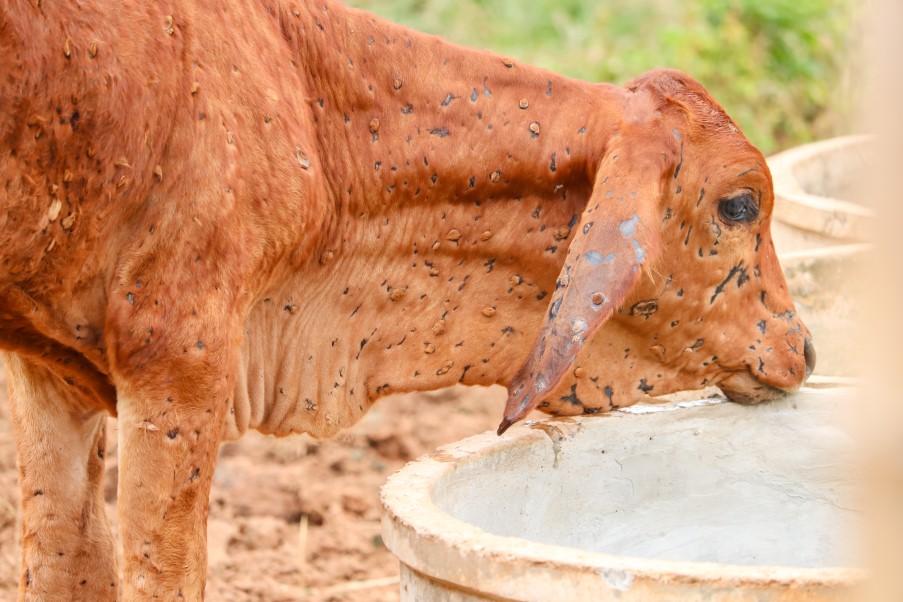
Emergency animal disease response
With emergency animal diseases (EAD) such as foot-and-mouth disease, lumpy skin disease and African swine fever recently detected in neighbouring countries, it has never been more important for Australia to be on the lookout for and ready to respond to a potential outbreak. As a veterinarian it is important to know how you could become involved in an EAD response.
EAD response structure
A detection of an EAD in Australia triggers a nationally agreed response structure. Affected states and territories are responsible for implementing EAD responses within their boundaries.
Depending on the size of the response if an EAD outbreak was to occur in NSW, a State Coordination Centre (SCC) and one or more Local Control Centres (LCC) would be established. The SCC is responsible for making decisions and coordinating state-wide EAD response operations. This is relayed to the LCC to apply operations on the ground, as they are normally located within or near the area of the disease outbreak.
Engaged personnel are managed at each of the centres under an organised structure using incident management principles. The same structure used in an EAD response, the Australasian Interservice Incident Management System (AIIMS), is used by all emergency services to manage natural disaster and other emergencies (flood, fire, storms etc.).
Role of veterinarians in a response
For any EAD response, it is essential to have personnel engaged that know the area and are familiar with the local industries and enterprises. Depending on their experience and skillset, veterinarians may be engaged in coordination roles in operational centres or in operational (on the ground) activities. Most veterinarians in an EAD response, are likely to be contracted in a field team undertaking activities such as:
• Disease surveillance e.g., examining animals and collecting diagnostic samples
• Vaccination or treatment programs
• Animal welfare assessments
• Humane destruction of infected or susceptible animals
• Biosecurity and quarantining activities
Engagement of veterinarians in a response
There are two ways that veterinary professionals may be engaged in an emergency response:
• As a government employee - directly engaged by government on either a temporary or casual basis.
• As a contractor – directly contracted as an individual or as a company (i.e., veterinary practice) by the government for specific services to support the response.
• Both are paid employment positions with differing conditions. A national guidance document on the engagement of veterinarians during an EAD response is available on the DAFF website. It provides further detail on employment conditions and pay rates. This document is currently undergoing review and will be updated later this year.

Why get involved?
Whilst veterinary professionals are not obligated to be directly involved, EAD responses can provide a new professional challenge. Each response is different and there is always something new to learn.

It can also be extremely rewarding to know your contribution has made a difference to the welfare of animals, the community, and in some cases, helped avoid major economic losses for the affected industry.
Veterinary practices, particularly those in rural communities that service livestock, may suffer a drastic reduction in work during a significant EAD response if movement on and off farms is heavily restricted.
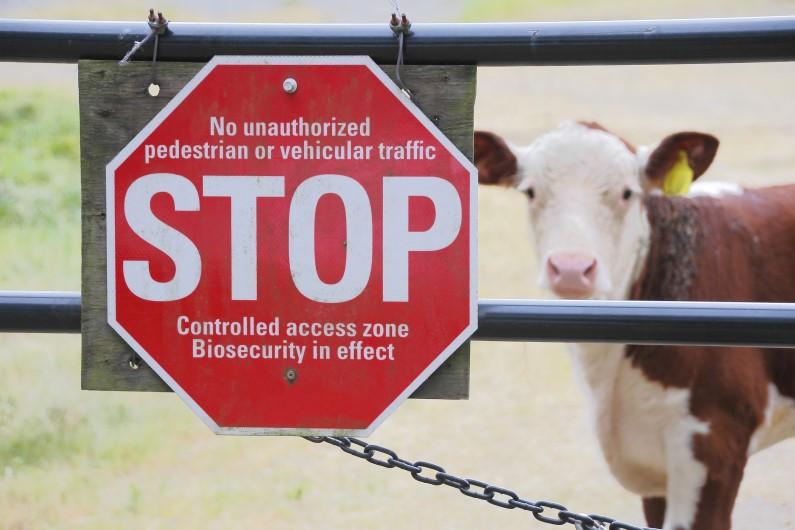
Participating in a response may help to offset income losses suffered by the practice but more importantly is also likely to help minimise the impact of the disease, allowing for quicker recovery from the outbreak.
Workforce capacity
The Board recognises that workforce capacity will be a significant issue in any response to an emergency animal disease outbreak and has developed a Workforce Capacity Emergency Response policy to ensure all available and willing veterinarians are able to participate if required.
All veterinarians currently working in Australia whose registration is not subject to restriction conditions will be able to participate in a biosecurity emergency or natural disaster.
Training for a response
If you are interested in participating in an EAD response further information and training is available.
You don’t have to be a large animal veterinarian to get involved as not all emergency responses involve livestock. All vets are encouraged to participate in emergency response training as not all responses are the same.
To get a better understanding of emergency response structure, roles, and responsibilities, at a minimum, vets are recommended to complete the three foundation modules on EMTrain (see below) and AIIMS Awareness training EMTrain
NSW DPI offers free introductory emergency response e-learning modules on their emergency management training platform EMTrain.
The three foundation modules provide a basic understanding of how an emergency response works in NSW:
1. Working in Agricultural Emergencies (1 structured CPD point)
2. Induction into DPI Response (1 structured CPD)
3. Information and Communications Management (1 structured CPD point)
Even if you have participated in an emergency response previously, the modules can be used as a refresher on the structure, roles and responsibilities that exist during an emergency response. The modules are self-paced and can be completed at any time.
Registration is free, to begin the training enrol via EMTrain
Further information on EADs and training available to vets can also be found on the information for vets page on the NSW DPI website.
In addition, retired veterinarians with honorary registration and non -practising conditions will be able to complete prescribed CPD to have these conditions varied such that they can be employed and perform restricted acts of veterinary science required in a response to a biosecurity emergency or natural disaster.
Similarly, people with veterinary qualifications and previously registered in Australia or New Zealand with either full or specialist registration will also be able to restored to the register to participate in a response as above after completing prescribed CPD.
Prescribed CPD will be determined by the Board in consultation with state and commonwealth government authorities.
AIIMS awareness training: free training for veterinarians
Are you interested in participating in an emergency response? Do you know what is involved in a response and what the role and responsibilities of a vet are?
NSW Department of Primary Industries is offering free enrolment into the Australasian Interservice Incident Management System (AIIMS) Awareness course for 500 participants (or until 30 June 2024).

This is the management system that is used nationally for emergency responses (emergency animal disease, bushfire, flood, drought etc.). This course is recommended for any veterinarian who wants to participate in an emergency response.
About the course
This course is designed to help vets develop an understanding of emergency response operations and provide clarity on the management processes.
The training provides an awareness of the unique ‘command and control’ structure that is used during a response. This knowledge is critical for vets to participate effectively and efficiently in a response.
All successful participants achieve a nationally recognised certificate upon completion for 22611VIC Course in Awareness of the Australasian Interservice Incident Management System (AIIMS).
Who should enrol?
Get the FAQs
The Board and NSW DPI have developed a list of Frequently Asked Questions to assist all veterinarians who may be interested in participating in an emergency animal diseases response.
The document covers:
1. Who can participate?
2. How do I prepare for participation?
3. What will be my role in a response?
4. Will I be compensated?
5. Why should I get involved?
Any veterinarian with an interest in participating in an emergency response (emergency animal disease, bushfire, flood, drought etc.) should enrol.
You don’t need to be a livestock veterinarian or work in a mixed practice. Ideally you will have completed the three foundation e-learning modules on EMTrain as background knowledge before enrolling however, this is not a prerequisite.
Course Format
The course is run completely online – you will work at your own pace. The course takes students, on average, 5 hours to complete the seven e-learning modules.
Once enrolled, you will have 4 weeks to complete the modules. You will need to successfully complete 2 multiple choice theory assessments and a final assessment scenario.
Each month, a live virtual group session (1.5 hrs) is run to discuss key ideas and answer any questions you may have. These sessions will be recorded and made available to all students. If you need support or additional attempts, you can email the training provider for support.
How to register
To register for the course, scan the QR code or visit this website. You will then be provided with further information on how to enrol in the course via email.
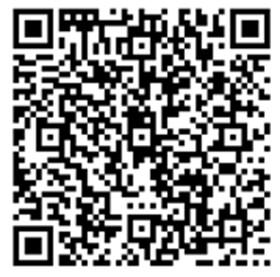
More information
If you have any questions or require further information, please email biosecurity.vetinfo@dpi.nsw.gov.au
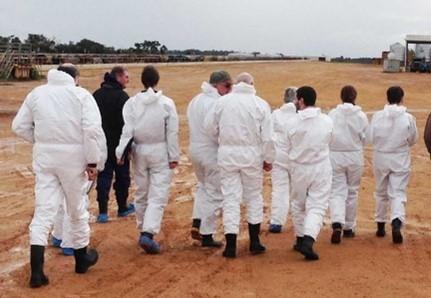
Foot-and-mouth disease (FMD) Preparedness and Biosecurity Workshops
Register now for the NSW DPI foot-and-mouth disease (FMD) Preparedness and Biosecurity Workshops for zoo, fauna park and petting zoo exhibitors and their staff – June 2023
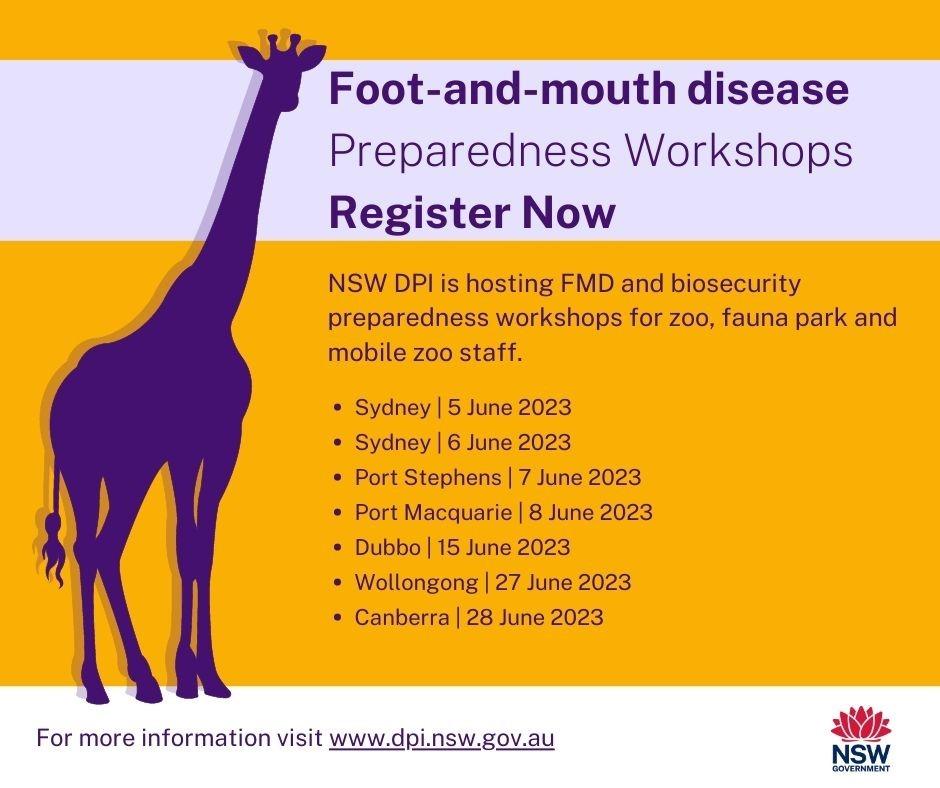
NSW Department of Primary Industries (NSW DPI) is hosting a series of free workshops on FMD and Biosecurity Preparedness for zoo, fauna park and mobile zoo exhibitors and their staff – and registrations are now open!
FMD affects all cloven-hoofed animals, including some zoo animals such as giraffe, Asian elephants, Himalayan tahr, Barbary sheep, antelopes, banteng, alpacas, goats, sheep and pigs.
There are implications for other species and business operations as well.
These workshops will enhance the understanding of FMD risks, and other emergency animal disease threats, for the zoo and wildlife industries and ensure that businesses that hold susceptible species are adequately informed, prepared, and supported.
The half day workshops will be aimed at all staff that work within a zoo, fauna park or mobile zoo operation including zookeepers, ground and maintenance staff, veterinary staff, those responsible for purchasing feed and supplies as well as supervisors, managers and policy makers.
The workshop content will be consistent with the principles outlined in the National Zoo Biosecurity Manual, but with a NSW and FMD focus.
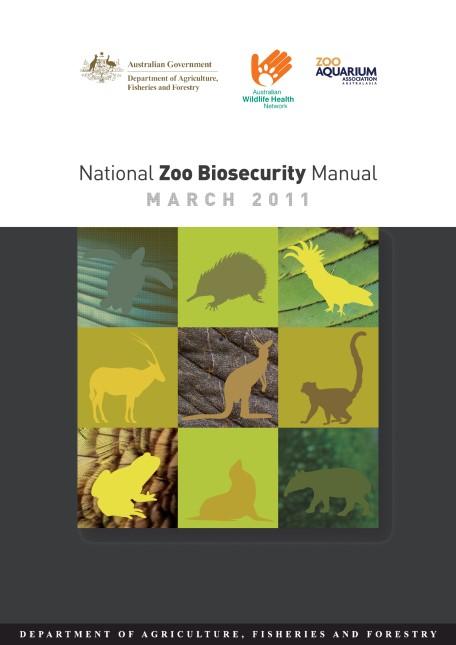
During the workshops, participants will:
a) learn ways to prepare for an emergency animal disease incursion in NSW
b) receive a Biosecurity Management Planner and be assisted to work through the document for their work site
c) have the opportunity to discuss FMD and other disease concerns with industry experts and colleagues.
The workshops are free to attend, and both NSW and interstate zoo staff are welcome to participate.
If you work in NSW and need to travel to attend a workshop, NSW DPI may be able to assist with travel and/or accommodation costs in accordance with NSW government policy. Please select this option when you register and a NSW DPI officer will be in contact to discuss your travel requirements.
More information can be found on the NSW DPI website
Have you heard of the AMR Vet Collective?
And its associated Online Vet AMS Course?
The mandate is simple:
• to translate the science around antimicrobial resistance (AMR) and antimicrobial stewardship (AMS) into meaningful and practical information that veterinarians can call upon to make informed, evidencebased decisions in their daily practice.
• to provide free, easy learning opportunities, with associated CPD points, around AMR and AMS.
Please visit us at:
www.amrvetcollective.com
www.vetams.org
Follow us on Facebook, LinkedIn, twitter and Instagram (search for AMR Vet Collective).
We all need to work together to protect our antimicrobials. This is a team sport, and you are a key player
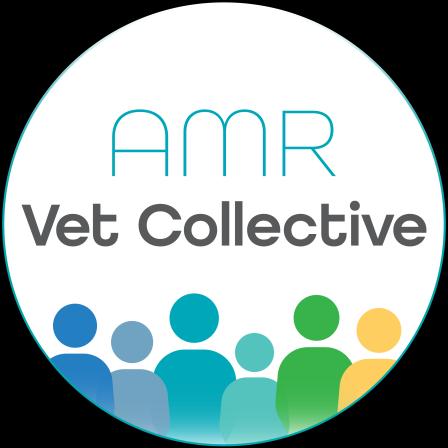
Registration of veterinary chemicals
The Adverse Experience Reporting Program (AERP) is a postregistration program that assesses reports of adverse experiences associated with the use of a registered chemical product (or those on permit).
An adverse experience is an unintended or unexpected outcome associated with the registered use of a product when used according to the approved label instructions.
This includes impacts on human beings, animals, crops and the environment or a lack of efficacy.
Anyone can report a problem with a chemical product.
Holders are required to report relevant information to the APVMA, in accordance with the legislation.
The AERP is not intended to replace a consumer’s right or responsibility to complain to the registration holder or manufacturer about an adverse experience involving an agricultural or veterinary chemical product.
Reports of adverse experiences are closely monitored by the APVMA.
It is vital to record, assess and classify adverse experiences to detect uncommon events not evident during the initial registration process of a product.
Revised veterinary labelling code
The Australian Pesticides and Veterinary Medicines Authority (APVMA) has published the revised Veterinary Labelling Code (VLC), following a review of the labelling requirements and guidance notes for veterinary chemical products. The VLC was last reviewed in 2015.

The revised VLC enshrines the current legislative requirements and best practice guidance, to ensure labels continue to provide appropriate advice for the safe and effective use of veterinary chemical products in Australia.
The objective of the review was to update the VLC to provide clarity for registrants and remove duplication. These revisions will ensure that the VLC provides industry and regulators with clear guidance for relevant labelling requirements.
Following extensive consultation with key stakeholder groups, the VLC has also been redesigned and restructured to improve overall user experience. No legislative changes were made during the review.
What the revised VLC means for product holders
As per the Agricultural and Veterinary Chemicals Code Regulations 1995 (18E), a label must comply with the requirements of the Labelling Standard or, if there is no Labelling Standard, the Agricultural or Veterinary Labelling Codes made by the APVMA, as in force from time to time. Existing/registered product labels that were compliant with the VLC published in 2015 do not require amendment to reflect the changes to wording or format in the revised VLC. Any such changes should instead be addressed when the existing label requires a material re-assessment or update, or as determined by the registrant. Any product labels not transferred to the E-label template may require a full review to ensure alignment with the revised VLC.
It is the responsibility of product holders to review the revised VLC and update their product labels to maintain compliance, as necessary.
The APVMA will continue to follow current procedural pathways related to compliance activities, and the 2-year phase-out period for previously approved marketed labels will still apply where material changes to the registered label are required unless agreed otherwise with the APVMA as per the Agricultural and Veterinary Chemicals Code (section 81)
If you have any questions about the requirements, please contact us via +61 2 6770 2300 or enquiries@apvma.gov.au
Registration of veterinary chemicals
Australian law requires all agricultural and veterinary chemical products sold in Australia to be registered by the Australian Pesticides and Veterinary Medicines Authority (APVMA). Products assessed must meet safety, trade, efficacy and labelling criteria.
Once a product is registered, it is approved for the purposes and uses stated on the product’s label.
Limited use of an unregistered chemical may also be allowed by permit.
Veterinarians are also able to supply and use products for animal treatment not registered by the APVMA but registered for human use by the Therapeutic Goods Administration (TGA) and unregistered products in animals generally but only in prescribed circumstances under the Stock Medicines Act (1989) (s 38). This legislation also allows a veterinarian to use a registered product contrary to use instructions (off-label) in prescribed circumstances.
Unregistered products include substances or a mixture of substances prepared by a pharmacist under the instruction of a veterinarian (compounded medications) and substances or a mixture of substances prepared by the veterinarian in the course of the practice of his or her profession.
Registered products and products with a permit for use may be found by searching the PubCRIS database and the Permits database available from the APVMA website
Medications and supply of scheduled medicines for racing greyhounds
The Greyhound Welfare and Integrity Commission (GWIC) wish to inform all practitioners of their additional unique responsibilities when providing and prescribing medications to NSW registered racing greyhounds, including when offering advice regarding any administered substance(s).
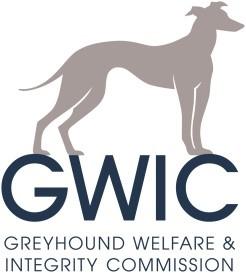
The NSW Greyhound Racing Rules (May 2022) identifies three categories of substances in relation to racing greyhounds:
• Prohibited Substances
• Exempted Substances (including Exempt Prohibited Substances)
• Permanently Banned Prohibited Substances
Prohibited Substances (PS) include any agent causing either a direct or indirect action or effect, or both an action and effect, within mammalian body systems.
Exempted Substances include the following (used within the context described):
1. Ethyloestrenol or norethisterone when administered orally to a female greyhound and where it has been prescribed by a veterinarian for the sole purpose of regulating or preventing oestrus.
2. Antimicrobials (antibiotics) and other anti-infective agents, with the exception of procaine penicillin.
3. Antiparasitics approved and registered for the use on canines, with the exception of levamisole.
4. Vaccines against infectious agents.
5. The prohibited substance prednisolone and its metabolites in greyhounds affected by superficial stromal keratitis (Pannus), when formally notified to GWIC
6. The prohibited substance procaine when detected in samples taken from greyhounds at a concentration equal to or less than 1,000 nanograms per millilitre in urine.
Permanently Banned Prohibited Substances (PBPS) are considered to be so concerning from a welfare or integrity perspective that they are deemed to have no place in the sport at all. It is an offence for a registered greyhound industry participant (e.g. breeder, trainer) to have these substances in their possession or at their premises.
A greyhound must be free of all Prohibited Substances (PS) and Permanently Banned Prohibited Substances (PBPS) when presenting to a race meeting.

It is therefore the responsibility of a veterinarian to take additional care when administering, prescribing, supplying or advising any substance to a racing greyhound. Not only will owner/trainers be subject to disciplinary action if such substances are detected on race-day sample testing, all such substances may affect a greyhound’s racing performance, potentially with negative welfare outcomes.
In addition to complying with the NSW rules relating to the supply and use of veterinary medicines and pesticides; when dealing with racing greyhounds, it is essential to advise and record recommended withholding periods.
Prescribing guidelines can be found at:
The AVA Prescribing, Authorising and Dispensing Guidelines
For any queries regarding medications or withholding periods for NSW registered racing greyhounds feel free to contact the Greyhound Welfare Integrity Commission
Veterinary Practitioners Board
The object of the Veterinary Practice Act 2003 is to regulate the provision of veterinary services in NSW to promote animal welfare and protect the public.
Board members:
Steven Ferguson (President)
Peter Alexander
Magdoline Awad
Georgina Child
Sarah Hunter
Paul McGreevy
Kate Mills
Lisa Minogue
Veterinary Practitioners Board
Suite 7.09, 247 Coward St
Mascot NSW 2020
President’s Report (cont’d)
The first goal is directed at People and Culture and is about creating a high performing Board and office team that works efficiently and sustainably in an inclusive, engaging, and collaborative culture. A culture that also accommodates robust and respectful discussions.
Our Operations goal will focus on delivering our core functions of registration, licencing and complaints management effectively and efficiently whilst managing risks and being alert to threats and opportunities. We will also look to reduce our environmental footprint.
The Financial goal focuses on effective budgeting and maintaining sufficient cash reserves to defend the reputation of the profession and respond to any significant contingencies.
Finally, the Board has expressed a goal towards Leadership. This goal will focus on developing an effective and progressive complaints management process that is sustainable, fair and transparent. It will also lead to developing relationships with relevant stakeholders that are deep, broad and valuable and include communication and awareness-building activities which showcase the Board and its work to the veterinarians and public of New South Wales.
Sustainability is a major focus in this strategic plan. The number of registered veterinarians in NSW continues to grow but more than ever are working part time.
Veterinarians are under ever increasing stresses due to ongoing workforce shortages, increased demand for our services and an increasing demand on how we provide those services.
The number of formal complaints continues to grow each year. The Board is committed to constant refinement and review of the complaints process both within the current legislated framework and by working with our new government to review our legislation to ensure it remains fit for purpose.

The Board is an active contributor to the AVBC’s Sustainable Practice Committee which as well as looking at complaints management is also working closely with the Veterinary Nurses Council of Australia (VNCA) on registration of veterinary nurses and technicians to support our workload and mental health of the profession.
Back to p. 1
T: +61 8338 1177
E: admin@vpb.nsw.gov.au
W: www.vpb.nsw.gov.au
The information contained in this newsletter reflects the policies of the Veterinary Practitioners Board (Board) and the current NSW legislation.
Any advice on specific issues not relating to Board policy should be obtained from either the AVA or appropriate government department or your own legal advisors.
